 by our College Data Analytics Team
by our College Data Analytics TeamWe've pulled together some essential information you should know about the program, including how many students graduate each year, the ethnic diversity of these students, average starting salaries, and more. Also, learn how Ohio State ranks among other schools offering degrees in neurobiology.
Go directly to any of the following sections:
Ohio State is in the top 10% of the country for neurobiology. More specifically it was ranked #18 out of 181 schools by College Factual. It is also ranked #1 in Ohio.
During the 2021-2022 academic year, Ohio State University - Main Campus handed out 260 bachelor's degrees in neurobiology & neurosciences. This is an increase of 24% over the previous year when 209 degrees were handed out.
In 2022, 12 students received their master’s degree in neurobiology from Ohio State. This makes it the #13 most popular school for neurobiology master’s degree candidates in the country.
In addition, 9 students received their doctoral degrees in neurobiology in 2022, making the school the #17 most popular school in the United States for this category of students.
The median salary of neurobiology students who receive their bachelor's degree at Ohio State is $29,638. This is less than $31,687, which is the national median of all neurobiology majors in the nation who earn bachelor's degrees.
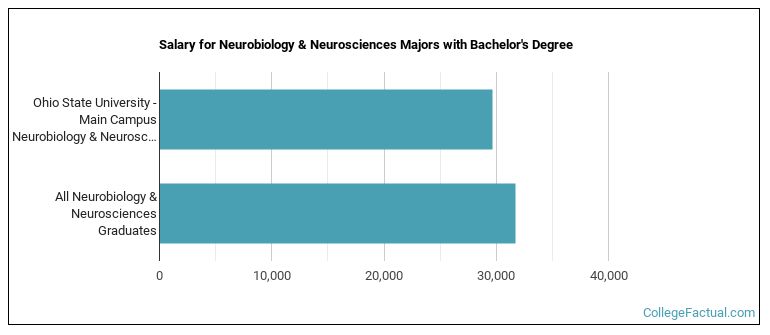
The typical student loan payment of a bachelor's degree student from the neurobiology program at Ohio State is $203 per month.
Out-of-state part-time undergraduates at Ohio State paid an average of $1,556 per credit hour in 2022-2023. The average for in-state students was $493 per credit hour. The average full-time tuition and fees for undergraduates are shown in the table below.
| In State | Out of State | |
|---|---|---|
| Tuition | $11,826 | $37,332 |
| Fees | $1,033 | $1,033 |
| Books and Supplies | $1,030 | $1,030 |
| On Campus Room and Board | $14,272 | $14,272 |
| On Campus Other Expenses | $3,070 | $3,070 |
Learn more about Ohio State tuition and fees.
Of the 260 students who earned a bachelor's degree in Neurobiology & Neurosciences from Ohio State in 2021-2022, 40% were men and 60% were women.
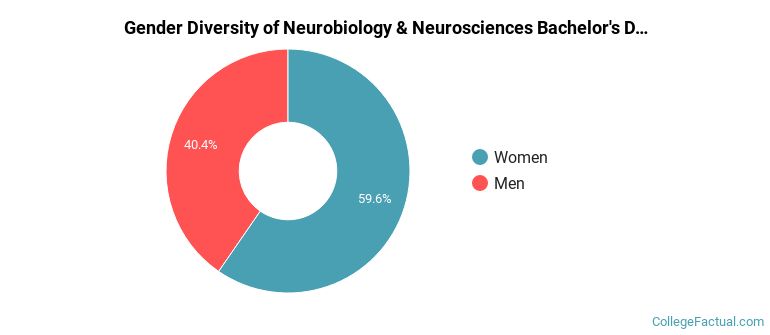
The majority of bachelor's degree recipients in this major at Ohio State are white. In the most recent graduating class for which data is available, 61% of students fell into this category.
The following table and chart show the ethnic background for students who recently graduated from Ohio State University - Main Campus with a bachelor's in neurobiology.
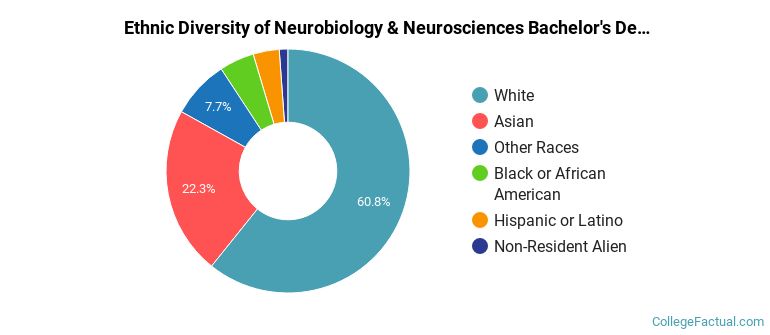
| Ethnic Background | Number of Students |
|---|---|
| Asian | 58 |
| Black or African American | 12 |
| Hispanic or Latino | 9 |
| White | 158 |
| Non-Resident Aliens | 3 |
| Other Races | 20 |
Online degrees for the Ohio State neurobiology bachelor’s degree program are not available at this time. To see if the school offers distance learning options in other areas, visit the Ohio State Online Learning page.
Of the 16 students who graduated with a Master’s in neurobiology from Ohio State in 2022, 31% were men and 69% were women.
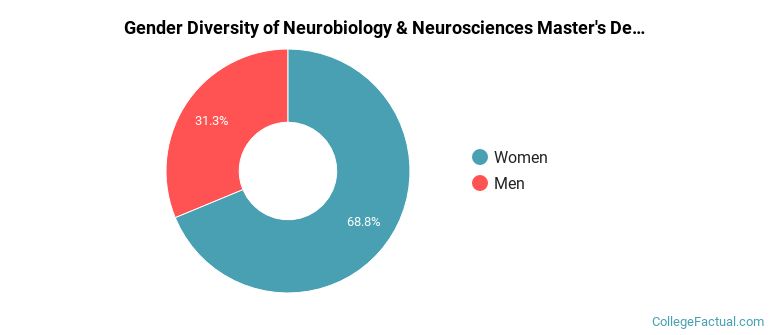
The majority of the students with this major are white. About 88% of 2022 graduates were in this category.
The following table and chart show the ethnic background for students who recently graduated from Ohio State University - Main Campus with a master's in neurobiology.
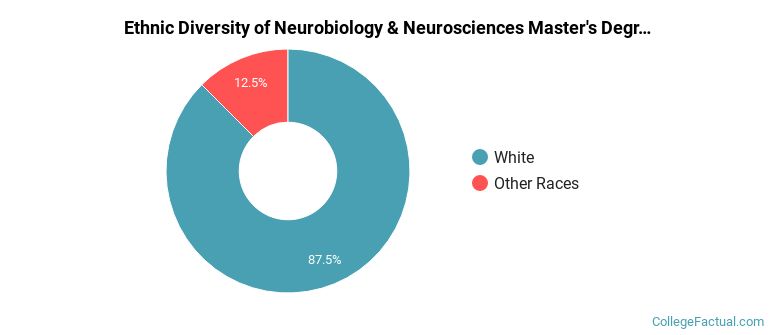
| Ethnic Background | Number of Students |
|---|---|
| Asian | 0 |
| Black or African American | 0 |
| Hispanic or Latino | 0 |
| White | 14 |
| Non-Resident Aliens | 0 |
| Other Races | 2 |
Take a look at the following statistics related to the make-up of the neurobiology majors at Ohio State University - Main Campus.
| Related Major | Annual Graduates |
|---|---|
| General Biology | 458 |
| Biochemistry, Biophysics & Molecular Biology | 124 |
| Zoology | 99 |
| Microbiological Sciences & Immunology | 68 |
| Genetics | 66 |
More about our data sources and methodologies.